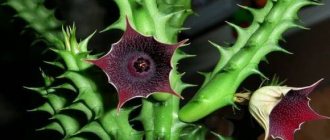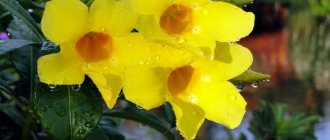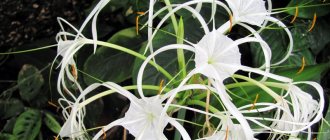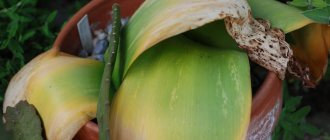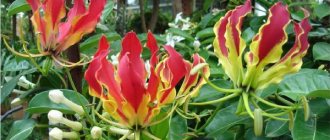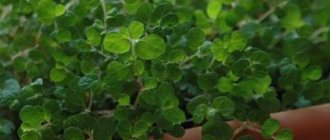Zhiryanka is an insectivorous plant belonging to the perennial genus. However, among the representatives of Pinguicula, where the flower belongs, there are also annuals. Zhiryanka is part of the Bladderweed family, as it prefers to live in water or swampy or any other damp area (river banks, streams, springs, in moss).
Description
Zhiryanka is a perennial carnivorous insectivorous plant, descended from the genus Puzyrchatkov. Despite the fact that the flower belongs to this genus, it has a big difference from other representatives - the plant has a well-developed root system. However, the roots are very weak and thin, which break with little effort or changes in soil density.
The height of the bush is about 15 cm. The stem of the plant is thickened and bare. Small hairs appear towards the top of the stem.
The leaf blades of the plant are whole and oval in shape. The edges of the leaves are rounded. Several leaves form a rosette. Veins forming a mesh are visible on the surface of the leaf plate. Along the veins of the leaf there are sugary formations that act as bait. In this way, the predatory plant lures prey. The leaves have a rich light green, often light green color.
When secreting a sweet and sticky secretion to attract insects, the leaves begin to shine. On the surface of the leaf blade there are digestive glands, which are necessary for the digestion and absorption of protein structures. Under the rosette that the foliage forms there is a false stomach with digestive enzymes. After performing its function, the leaf blade loses most of the glands, after which the leaf dies. Every 5-6 days the foliage of the plant is renewed.
Peduncles appear in the center of the rosette. They do not have foliage on the peduncle. In spring, the plant blooms with white, blue, purple or pink flowers. The flowers are inflorescences, like a violet with five petals in a circle. The flowers have a delicate warm color, due to which they attract gardeners.
Moran butterfly (Pinguicula moranensis)
Moran's butterwort is a perennial insectivorous plant.
Description: In summer, the plant forms a basal rosette of leaves up to 10 centimeters in length, which are covered with mucous glands. Like other species, the moran butterfly feeds on insects. Nutrients extracted from the flesh of small arthropods are used to supplement existing nutrients found in the soil. In winter, Moran's butterwort loses its rosette and takes on the appearance of a small carnivorous plant. The flower has a pink or purple hue, located on a vertical stem up to 25 cm long. The plant blooms twice a year.
Distribution and Habitat: This species was first found in Mexico in 1799. To this day, the plant grows in Mexico and also in Guatemala. Moran's butterwort is widely cultivated throughout the world.
Spreading
Zhiryanka grows in watery, highly moist soils. The plant prefers peat bogs and marshy areas, edges of lakes, ponds, and rivers. Therefore, in its natural environment, the plant can be found in the European zone, Asia, in the swampy areas of Japan and North America. Some varieties grow in the southern regions of America and the Gulf of Mexico, in Brazil.
There are about 6 species of butterwort found in Russia. You can meet certain species in the Arctic, the European part and the Far East. Also grows in the Pechora region and Pskov. Western and Eastern Siberia is a place for the natural growth of a species such as common butterwort.
Zhiryanka is a very fastidious plant that responds to climate change. If the soil is contaminated, the plant may die. Almost all species do not tolerate environmental changes under human influence. Therefore, the places where the plant grows are protected areas according to the laws of many countries.
Common butterwort (Pinguicula vulgaris L.)
Common Zhiryanka is a perennial herbaceous plant of the Zhiryanka genus, of the Bladderweed family.
Habitat: Wet rocks and ledges in subalpine areas, swamps and wet soil in mountainous areas.
Distribution: Europe, Greenland, Iceland, Scandinavia, Alaska.
Flowering: June-August.
Types of butterwort with photos and names
Zhiryanka has about 70 varieties. The optimal conditions for the plant to live are watery soils with the presence of silt and rocky soil. The plant is very whimsical and rarely grows in places where people stay. Prefers remote wild places with plenty of water. Only 5 species are grown at home, the rest grow in the natural environment. At the same time, some species get along well in an artificial environment and indoor conditions.
Moran butterfly pinguicula moranensis
A perennial plant that changes foliage twice per season - in summer and winter. At the same time, summer leaves have a rich light green color. The length of the leaf located in the root rosette reaches 13 cm. The shape of the leaf plate in summer rosettes is very smooth, oval or round. Each leaf contains many glandular compounds.
Winter rosettes consist of leaves with a diameter of about 4 cm. Each leaf is covered with fluff. Winter rosettes do not have glands on the leaves. However, winter individuals are distinguished by a large amount of foliage - one rosette includes about a hundred leaf blades.
Moran's butterwort blooms with lilac or white flowers. Up to 7 inflorescences appear on one rosette. The diameter of the flowers reaches 5 cm. Some varieties of this species have larger flowers.
Butterwort pinguicula cyclosecta
The most common decorative flower among butterworts. The peculiarity of the species is that the plant forms a small rosette consisting of leaves 3 cm in diameter. The rosette, assembled from leaf blades, is almost completely flat. The foliage on the stem grows in a spiral, which makes the plant original. The peculiarity of this variety is that leaves for catching insects grow underground.
Each individual perennial has about 30-40 petals on one rosette. The leaves have a silvery tint. Along the edges of the leaf, the shade gradually changes to purple, which increases the decorativeness of the variety.
A long peduncle rises from the center of the rosette; about 5 cm long, a large flower grows on the peduncle compared to the size of the plant itself. The diameter of each flower reaches 4 cm. The color of the inflorescence gives the plant a special beauty, since the bright purple bud harmoniously combines with the rim of the leaf, creating a single flower structure.
Gypsum butterfly pinguicula gypsicola
A one of a kind plant that tolerates and grows well in dry areas. The rosette that the leaves form is small and unlike other indoor species. The foliage forming a rosette creates an even circle that looks gentle and beautiful in a flower garden.
The variety got its name due to the fact that this species, unlike others, grows only in gypsum soils - with an equal combination of sand mixture and vermiculite.
The leaves are small “cilia” of an oblong shape. The length of one sheet reaches 8 cm, and the width is only 4 mm. About 30 leaves of different lengths grow on one rosette, making the butterwort look original in a pot. The color of the rosette components is matte green, less often the rosette has purple shades.
Zhiryanka has an erect peduncle, on which a purple flower with a diameter of up to 3 cm appears at the beginning of summer. Flowering under normal conditions lasts until the onset of permanent frosts.
Alpine butterfly pinguicula alpina
The peculiarity of the species lies in the shape of the leaves. The rosettes of this variety consist of oval leaves rounded upward at the edges. The shade of each leaf blade changes towards the edge from light green to burgundy. Each leaf blade has many veins on which glands are located for catching midges. The leaves are of a special shape - the width of each individual reaches only 2 cm, and the length is up to 14 cm.
The flowers of this variety grow on stalks 12-13 cm long and are white or beige in color. Flowering occurs from June to November.
Common butterwort pinguicula vulgaris
The most common species found in Russia. The foliage has an oval shape. Several leaves are collected in a rosette that forms an even circle. The foliage has a light green color on top. On multiple veins there are glands for attracting insects and digesting food. The dimensions of each leaf are small - about 3 cm wide and 5 cm long. Drops on the leaf give a special glossy shine that makes the plant unusual.
Peduncles are up to 17 cm long. The edge of the peduncle bends to the sides. On each peduncle small violet-like flowers grow, 3 cm in diameter. Hairs are present on all petals. Flowering occurs in mid-July.
Grandiflora pinguicula grandiflora
A plant that prefers to grow in damp areas. If you touch the leaf, you can feel the villi located over the entire surface of the rosette. The length of the stem reaches 15 cm. Each stem has about 30 leaves 3-4 cm wide and 8-10 long.
The peculiarity of the plant is its long stalks, on which large flowers grow with a diameter of up to 4 cm. The flowers look like purple violets with a whitish core. Flowering occurs from late spring to early autumn. With the onset of autumn, the plant sheds its leaves.
Pinguicula agnata
A hybrid species that grows only in artificial environments. The foliage of the insectivorous perennial is burgundy-pink, sometimes red and green. The highly prominent veins of the smooth, rounded leaf secrete a large number of dew-like glands. The foliage shimmers beautifully in the sun.
Zhiryanka is small in size. The rosette is about 10 cm in diameter. The flowers of the plant are small inflorescences with a diameter of about 3 cm. Flowering occurs in June-July.
Zhiryanka Tina
A hybrid that does not have natural growing conditions. The diameter of the rosette, assembled from several leaves, is about 15 cm. Each leaf has an oval shape, with straight edges, and a bright light green color.
The foliage is densely covered with glands used as bait and for digesting insects. A special feature of the variety is that the variety is suitable for any growing conditions. At the same time, butterwort feels good both in arid areas and in humid conditions.
Cute appearance of an aggressive insectivore
The genus of butterwort contains perennial insectivorous plants, which are surprisingly easy to recognize by their similar leaves and flowering. Despite the different colors of the flowers, butterwort always makes a touching, gentle impression. This perennial belongs to the Bladderwort family (Lentibulariaceae), and proudly bears the status of the only plant that has true roots. Zhiryanka got its name thanks to its very fleshy leaves, the sticky coating on which really seems greasy. Among gardeners, butterwort is also known as buttergrass and blue butterwort.
Butterwort (Pinguicula) are perennial plants that, despite having the status of an insectivorous crop, can boast of the presence of true roots that allow the plant to survive in extreme cases. Very fleshy, juicy, with an oily sheen, the leaves of this plant seem both very bright and simple. They gather into a neat, very beautiful basal rosette, under which the “false stomach” is located. Elongated-ovoid, with a rounded edge, they are covered with small droplets of sticky secretion, which is secreted by the glands of the plant.
It is the glands, half of which secrete a sweetish mucus secretion, and the other - digestive enzymes, that are responsible for poisoning insects. The digestion mechanism of butterwort is reminiscent of another insectivorous plant - sundew. But the leaf of butterwort curls up slowly, and more often it remains completely unfolded. Thanks to the digestive glands located on the surface of the leaves, over-etching begins without twisting. When an insect lands on the bright lime green of a beauty, tempted by the sweetish coating, it sticks hopelessly, and in the case of small midges, the enzymes produced by the glands completely poison it.
But the movement of large insects caught in the butterwort’s trap, like twitching a cobweb, triggers the mechanism of slow leaf curling and gradual breakdown of protein compounds. It is no coincidence that flower growers claim that butterwort is a kind of living Velcro tape. It is on the stickiness of this plant that its entire predatory mechanism is built. There are two periods of plant development - wet and dry. Butterwort produces summer “hunting” leaves and winter small pubescent ones, which are actually growing points or buds; Thus, one plant forms two rosettes per year - a real one and a succulent winter rosette.
But it’s not just the predatory talents of this culture that need to be admired. After all, butterwort has very beautiful single flowers, rising on a long peduncle. Pretty, simple, they most closely resemble violets in shape, although upon closer inspection a slightly different structure becomes apparent, with asymmetrically located two upper and lower lobes of the corolla and a light center of the throat. The flowers of the butterwort reach 2-3 cm in diameter. The advantages of the plant include a variable palette of colors, including blue and purple, as well as rarer white and pink colors. After flowering, fruit capsules are set.
Grandiflora butterfly (Pinguicula grandiflora). © Don Peace
Caring for butterfly at home
Almost all types are unpretentious. They do not require special care. Therefore, a carnivorous plant can often be found among beginning gardeners. However, when creating conditions comfortable for the plant, flowering will continue for a longer time.
Lighting for butterworts
Zhiryanka is unpretentious to lighting conditions. The peculiarity of the plant is that in its natural environment the plant prefers swampy areas. Therefore, for normal growth, a few hours a day in the sun is enough. In this case, the rays should be diffused, since direct sunlight can negatively affect the condition of the leaves.
The optimal conditions for the growth of butterwort are shaded areas with evening or morning sun exposure to the area. It is better to place the pot with the plant on the east or west window. In addition, butterwort grows well under artificial lighting.
An important point in growing butterwort at home is to place the flower in one place, without turning the pot in different directions. The flower does not require constant rotation of the pot; it independently adapts to the light. Also, don't add light as the seasons change.
Comfortable temperature conditions
At home, the perennial can withstand room temperature well. In summer, the flower calmly tolerates dry air, and in winter the optimal temperature is 15 degrees. To do this, it is worth lowering the temperature in the room with the appearance of winter leaves.
For normal growth, artificial air vibrations should be created in the room where butternut squash is grown. To do this, it is necessary to reduce the air temperature closer to night. This has a beneficial effect on the duration of flowering of butterwort.
Watering and air humidity
Despite the fact that butterwort grows near watery areas, growing indoors requires moderate watering. High soil moisture can cause root rot. It is necessary to water the plant not at the roots, but in a tray located under the pot. To do this, there must be holes at the bottom of the pot. It is worth watering once every two days. In winter, watering is reduced to twice a week. It is necessary to avoid getting moisture on the foliage of the plant.
The perennial prefers optimal air humidity. Dry air can destroy outlets. In room conditions, the butterwort receives moisture from a pan of water, from where water evaporates.
Feeding for butterwort
The butterwort receives all its nutrients when the insect digests it, so the plant does not need additional fertilizer or feeding. Insects that land on the foliage can be used as feeding.
Transplantation and substrate
When growing and replanting a flower, it is important to pay attention to the condition of the soil mixture. The normal composition for a perennial is a peat or acidic substrate. The plant also grows well in a mixture of equal parts sand and peat.
It is necessary to replant the butterwort no more than once a year, in warm weather, but before flowering. During transplantation, the butterwort along with the soil is dug out of the ground. Next, the roots are cleaned of excess substrate without breaking or affecting the main roots. The new pot should be filled to the brim with the new mixture.
Priming
The soil for replanting the plant should be light. Zhiryanka prefers acidic substrates. Therefore, before planting, you should ensure good air permeability of the soil. Some garden stores sell a ready-made mixture for insectivorous plants based on peat, vermiculite and sand. You can also prepare your own soil mixture. To do this, you need to mix equal parts of peat and sand.
How to transplant butterwort
For planting, you need to make a depression equal to the length of the roots of the butterwort. After lowering the bush into the ground, the roots are buried in wet peat. After which the ground is watered with purified water. The transplanted flower is covered with a cap and placed in a lighted place for several days so that the plant takes root. After the leaves return to their normal healthy color and condition, it is necessary to remove and ventilate the bush to remove excess concentrate. Place the new perennial in a permanent place.
Gypsum butterfly (Pinguicula gypsicola)
Description: the rhizome is simple, short, but there are many adventitious filamentous roots. The numerous basal leaves have a ciliated structure and an oblong-wedge-shaped or blunt shape (1.5-8 cm in length, 2-3.5 mm in width). Pedicel erect; the flower has a characteristic purple hue. The corolla is divided into the upper and lower lips; petals are purple. The diameter of the corolla is from 2 to 2.5 cm.
Distribution and habitat: The plant is native to Mexico and is also found in Brazil.
This species of butterwort was first found and studied in 1910 near a gypsum quarry located in San Luis (1300 m above sea level). In 1991, it received its name and began to be cultivated in Europe. The habitat of the gypsum butterfly requires a more detailed description. The typical environment for this plant is rocky hills: the grass grows either in crystalline crevices or in thin layers of eroded soil. It prefers the more shaded side of the hill, facing north or northwest, since there is less evaporation of water from the soil and the temperature is lower. However, sometimes the plant can be found in shady places in small canyons. During the dry season (December to June), the plant receives moisture only from morning mists. Between August and November there are more regular rains, but the hill itself also retains moisture, which provides the plant with additional nutrition.
Flowering: from June to November (depending on soil moisture); flowering may begin later.
Diseases and pests of butterwort
The main advantage of butterwort is its unpretentiousness to pests. Because all insects become food for the flower.
The plant is practically not susceptible to disease, since it is able to adapt to any growing conditions. However, if the air humidity is high, the plant may rot. Difficulties may arise when growing perennials:
- if there is a lack of sunlight, the plant stops blooming;
- if you water a perennial directly on the roots or over-moisten the air, the roots will rot;
- when direct sunlight hits the foliage, burns appear;
- with insufficient air humidity and dry soil, the plant dries out, the foliage becomes decrepit and wrinkled.
When optimal conditions are created, the perennial pleases gardeners with long-lasting flowering and beauty.
Flat leaf butterfly (Pinguicula planifolia)
Description: Flat-leaved butterwort is distinguished from other species by the deep dark burgundy color of its leaves. Some samples may have lighter colors (due to insufficient sunlight). Socket diameter – 12.5 cm; the height of the peduncle is 12 cm. The flower of the flat-leaved butterwort has five petals. The color of the petals varies from pinkish-purple to almost white. The flowers are small, but can reach 2 cm in diameter. In order for the flower to fully open its petals, the plant needs bright sunlight for several days. It is in sunlight that the leaves of the grass acquire a deep red color.
Natural environment: This butterfly species likes a very humid habitat.
Flat-leaved butterwort can be found in damp areas such as slopes, swamps, and wet meadows. Distribution: Widely distributed in the Northern Hemisphere. This type of butterfly comes from the USA (southeastern part); often found in France.
Flowering period: from March to April depending on temperature.
Threats: the plant is threatened by drainage of the site, deterioration of water quality and all types of human activity.
Reproduction of butterwort
Bushes can be propagated in two ways - vegetative and seed. At home, the most common method is division by cuttings. Each method allows you to obtain young individuals.
Growing butterwort from seeds
Growing butterwort from seeds occurs in the spring. Seeds are sown on a fertile substrate, pre-moistened with water. It is necessary to sow seeds at high indoor humidity. After which the container with the soil is covered with film and left in this state until sprouts appear. An optimal temperature of 22-24 degrees must be maintained inside the container with seeds.
Under constant condensation and humidity, sprouts appear within a few weeks. Some varieties grow for a long time, so they need to be planted in March. After sprouts appear, condensation should be removed and a constant flow of fresh air should be provided. After the sprouts grow and become stronger, the bushes are planted in separate pots.
Vegetative propagation
Vegetation of butterwort occurs much faster than with seeds. In this case, in warm weather, it is necessary to cut off a healthy leaf from the plant and place it in a humid environment. It is better to plant the leaves in the sand for rooting. To provide sufficient oxygen to the base of the leaf. Before the roots appear, you can place the bases of the leaves in water. Immediately after rooting, the leaf is transplanted into a permanent environment. It is better to replant “winter” leaves.
Reproduction is also possible by separating daughter rosettes. In this case, the plants are separated from the mother plants and planted in a permanent habitat. It is important to plant the plant before active perennial growth and flowering appear.
Possible problems
Problems with indoor butterfly can only arise if the care rules are violated:
- The foliage dries out or burns appear on its surface in the form of dark spots . The bush was in direct sunlight for a long time.
- The foliage wrinkles and dries out . Due to lack of moisture in the substrate or dry air.
- Lack of flowering . The roots are cramped in the container or the lighting is too poor.
- The appearance of rot in winter . Watering too often or too much.
- In winter the leaves have fallen . The fat woman went into a dormant state.
Pests try to avoid such a plant. But if the air humidity in the room is very low, then aphids and spider mites can settle on it.
Ventilation
An important point in growing butterwort is to regularly ventilate the butterwort. Ventilation is necessary to remove excess condensation from the leaves. The butterwort is not afraid of drafts, so it is necessary to open the windows every day to provide the plant with access to oxygen. The plant reacts normally to temperature changes, but sharp temperature fluctuations should be avoided by limiting ventilation in winter.
To obtain constant air, the insectivorous perennial is moved to the balcony or taken out into the garden in the summer. This way the plant receives enough food and air.
Vallisneriifolia (Pinguicula vallisneriifolia)
Vallisneriifolia is another species of insectivorous plants belonging to the Bladderwort family.
Distribution and habitats: the plant lives in rocky areas and limestone zones at an altitude of 600-1700 meters above sea level. The perennial grass prefers moist, but protected from direct rainfall areas. Vallisneriifolia is widespread in the mountains of Spain.
Description: the flower is pale pink or purple, less often white or pale blue. The petals of the corolla are 15-22 mm long. The basal leaves have a diameter of 12.5 cm, a height of 12 cm; the color of the socket is terracotta,
Flowering period: Vallisneriifolia usually blooms in May or early June.
How to catch insects
Flower growers admire butterwort, comparing it with sundew, another carnivorous plant.
The essence of catching insects is as follows: the plant secretes a secret that remains on the foliage. The insects smell the sweet smell and land on the leaf, after which they stick. The plant wraps itself in a ball of leaves, then digests the insect using enzymes on the leaf blade. When an insect encounters a sweet enzyme, the twisting of the leaf blade provokes the movement of prey on the leaf blade.
Small midges can be digested on an open leaf. However, when a large insect lands on the plant, the leaf curls up slowly, secreting even more secretion to hold its prey. After digestion, the plant absorbs the necessary substances.
Mechanism for catching insects
The upper side of the leaf plate of the butterwort is strewn with glands of two types: some exude sticky sweet mucus, which attracts insects and is also a trap for them, and others - digestive enzymes.
Unlike sundew, the leaf of butterwort curls very slowly and when digesting small insects, it simply does not have time to curl completely. So those who like to tickle their nerves can enjoy the unusual spectacle in all its glory, watching the digestion process of this cute and rather pretty plant.
Interesting Facts
Insectivorous butterwort is not included in the list of traditional medicinal plants. However, many folk recipes use the perennial as a medicinal plant. Thus, products based on the plant are used to treat asthma and upper respiratory tract diseases.
The perennial has many mineral constituents that help relieve cramps and pain.
Zhiryanka is used in Canada to make cheese. In this case, cheese makers put leaves in fresh milk and leave them in this state for some time. After which the finished cheese is eaten. This is due to the fact that buttermilk secretes enzymes that easily break down animal proteins, which is sufficient to obtain thick milk and produce cheese.
Round butterfly (Pinguicula cyclosecta)
Zhiryanka orbicularis is the simplest variety of Zhiryanka.
Description: The plant differs from other species in its rounded pale green sessile leaves. Numerous leaves are collected in a dense rosette. The diameter of the rosette is 20 cm, the height of the peduncle is 12 cm. The corolla is very fragile, purple in color. The rhizome is short, simple, with many adventitious filamentous roots. This herb needs minerals. Therefore, like many butterwort species, this plant uses its leaves as Velcro to trap insects (to supplement poor nutrition).
Distribution: The homeland of the orbicularis is Mexico. In the wild, the perennial grows in forests: on limestone rocks and tree trunks. Sometimes grows in areas with a lot of mosses or simply on cracks in rocks (on the north side of rocks).
Violet butterfly (Pinguicula ionantha)
Violet flowering plant is a rare species of flowering plants of the Bladderwort family.
Description: This perennial herbaceous carnivorous plant produces a basal rosette of bright green leaves with fleshy edges. The leaves, each up to 8 centimeters long, are covered with sticky hairs. The flower is pale purple. The corolla has greenish spurs on the back. The center of the flower is covered with yellow or red hairs. The corolla lobes have white hairs.
Flowering period : February-April.
Habitat: The grass is widespread in the United States. Grows in swamps, deep swamps, wet depressions and puddles. In many countries, the violet-flowered butterwort is classified as an endangered species. Forest fires are a threat to the plant. In addition, prolonged drought can reduce the number of plants.
Threadleaf butterwort (Pinguicula filifolia)
Zhiryanka threadleaf is a perennial plant, another insectivorous subspecies of the Zhiryanka genus.
Distribution: filamentous butterwort covers a wider ecological zone than other species. Found primarily in western Cuba and some neighboring regions. Threadleaf butterwort was first discovered in 1866.
Habitat and Ecology: Threadleaf butterwort grows near shorelines and in marshes. The grass thrives in swamps with high temperatures and high humidity in the air and soil. However, this plant can withstand the dry season, which lasts from November to April.
Description: the length of the leaves of the filamentous butterwort is 4-6 mm, the width is 1-1.5 mm. Like most butterwort species, this tropical plant uses its sticky secretions on its leaves to catch small insects, pollen and other plant debris to supplement its own nutrition. The rosette has a diameter of 8-10 mm. One rosette usually has 4-6 blades. Each flower consists of 5 petals. The color of the petals varies from white to yellow, from blue to purple.
Flowering: The flowering period occurs mainly in the summer season (July, August), but the plant can bloom all year round.
Threats: due to its constant presence in the swamp, threadwort often faces the threat of rotting. When the butterwort reaches mature growth, the leaf blades take on a vertical position. This upright position helps it avoid rotting and fungal diseases.
Crystal butterfly (Pinguicula crystallina)
butterfly is the last plant in our list from the Zhiryanka genus.
Features: A mature plant has six to nine thin, light green leaves (1.5 cm to 3 cm long and 1 cm wide). The shape of the leaves varies from elongated to ovate-oblong. The flower has a whitish-blue or pink tint. The corolla can reach up to 2 cm in diameter.
Distribution and habitats: Cyprus is considered the birthplace of the plant, but historical records prove that the crystal butterwort was first discovered in the territory of modern Turkey. The plant is also found in southern Italy, Bosnia and Herzegovina, Albania, and Greece. Crystal butterfly prefers limestone cliffs, stone walls, as well as swamps or damp meadows. Cultivating this species is not easy. The plant is susceptible to frost and snow.
Few residents of our country are familiar with the butterwort.
However, now, if you ever happen to come across this wild and mesmerizingly beautiful herb, you will be able to easily recognize it, and maybe even want to grow it on your windowsill.
agronomu.com
General information:
Zhiryanka (lat. Pinguicula)
is a genus of perennial insectivorous herbaceous plant of the Bladderwort family Lentibulariaceae. This is the only representative of the genus in the family that has a real root. The plant received its name because of its fleshy, oily shiny succulent leaves. Popularly called blue Zhiryanka, oil grass.
The leaves are most often green, forming a rosette. Zhiryanka does not have bubbles to catch insects and this function is performed directly by the leaves. The upper part of the leaf has numerous glands that generate enzymes that digest food. The movement of the caught insect leads to a slow curling of the leaf, and the mucus helps to dissolve the protein of the victim. The flower is solitary, on a long peduncle. The color of the flower varies from snow-white, blue, to purple, violet. The fruit is in the form of a box.
Zhiryanka is widespread in Asia, Japan, Europe, North America and the Andes; plants from frost-resistant to non-frost-resistant are found. The plant lives in peat bogs and wetlands in the northern hemisphere. Some species are found in Mexico, the Caribbean and regions of South America. Zhiryanka is a very sensitive plant to changes in growing conditions and the plant dies very quickly when drained, so the places where Zhiryanka lives are protected.
